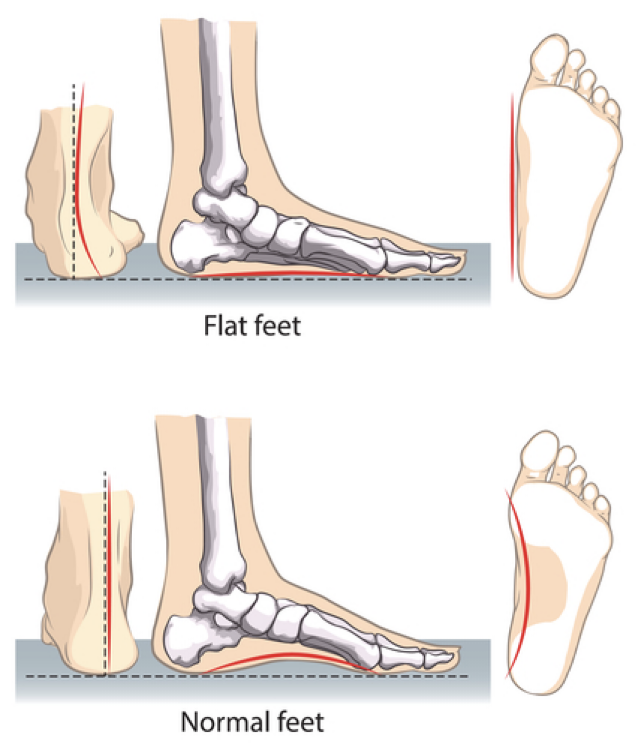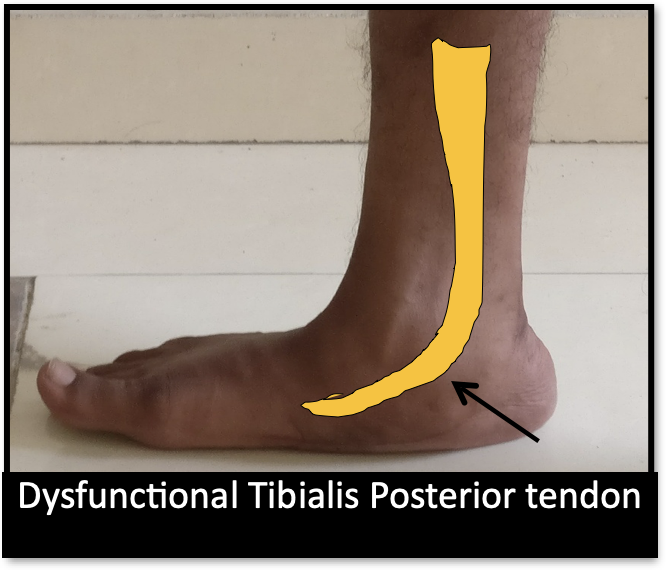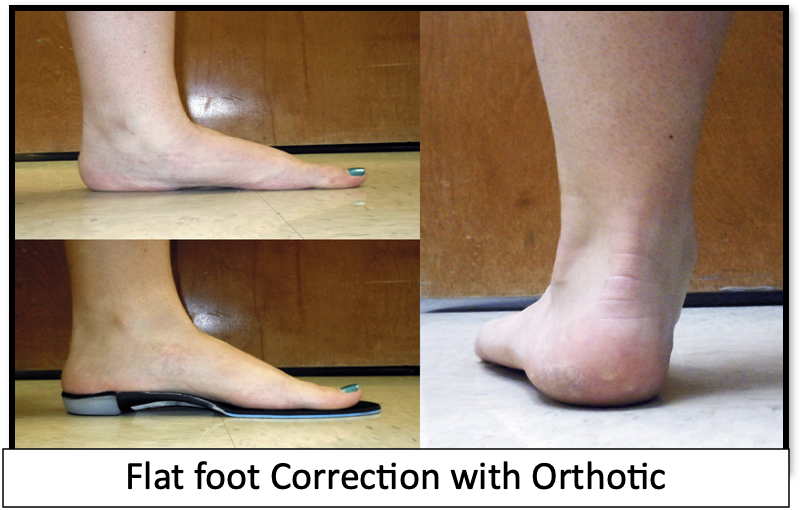
What is a flat foot?
There is usually a gap beneath the inner sole of the foot when a person stands. When this arch is low or lost, a person is said to have a flat foot. The arch provides a spring to the step and helps distribute body weight across the legs and feet. The arch needs to be both sturdy and flexible during different phases of a person’s walking cycle to adapt to walking on a variety of surfaces. When the arch is lost, the person walks on the inner border of the foot and the foot tends to points outwards, leading to an uneven distribution of weight. This in turn causes abnormal stresses on the feet going all the way up to the knee, hip and back leading to an abnormal gait and pain along the strained muscles and ligaments.

What are the causes of flat foot?
Flat feet are very common. More than 30% people have flat feet but not all need treatment. The condition is normal in infants and toddlers. In children the arch is still forming and usually develops fully by 4 to 6 years of age. Most children with asymptomatic flat feet do not need treatment. However if the child has flat feet due to incorrect bone development, hyperlaxity of ligaments or neuromuscular conditions like spina bifida or cerebral palsy, the doctor will need to treat the underlying cause. In adults the most common cause is damage or abnormal stretching of a tendon called the tibialis posterior on the inner side of the foot. This is due to age related degeneration or inflammatory conditions. This tendon is usually required to maintain the foot arch.

Other causes of flat foot include:
1- Genetic factors with flat feet passed on from parents to children in the genes.
2- Obesity and diabetes
3- Pregnancy-this causes temporary or permanent flat feet due to increased production of elastin, a protein that increases the elasticity of skin and connective tissue.
4- Foot and ankle injuries
5- Arthritis and rheumatoid arthritis
6- Accessory navicular bone which is an abnormal bone on the inner side of the foot. The tibialis posterior tendon which is responsible for maintaining the arch inserts on this abnormal bone making the tendon dysfunctional.
7- Tarsal coalition-this is abnormal fusion of foot bones causing stiffness of foot bones in adolescents.
8- Collagen disorders like Ehlers-Danlos syndrome and Marfan syndrome.
When should I seek treatment?
1- If the feet are painful and stiff.
2- If the feet feel tired or aching after prolonged periods of standing or playing sports.
3- If you have problems with walking or balance.
4- If you often get feet or ankle injuries.
5- If you’ve developed a flat foot recently and it is getting worse.
What should I expect at the doctor’s clinic?
While flat feet may usually be self diagnosed, the underlying cause may be investigated by an Orthopaedic surgeon specializing in foot and ankle surgery. This may involve a visual examination as well as imaging tests to evaluate the alignment of the bones.
The specialist usually examines the patient in walking, standing and sitting position. The doctor will usually ask the patient to stand on tiptoes. If the arch forms while doing this, the foot is a flexible flat foot. If the arch does not form, it is usually graded as a rigid flat foot. Some other tests in the form of weight bearing X-rays and blood investigations may be needed. In some cases a CT or MRI scan is done to assess the bones and tendons in the foot.
What are the treatments available for a flat foot?
Treatment in children
Flat foot in a child does not require treatment if it is not causing pain or walking problems.
Your child will grow and develop normally with or without the use of specialized shoes or shoe inserts.
The child can walk barefoot, run or jump without making the feet worse.
The only exception maybe in children with congenital foot deformities which may require surgery.
Treatment in adults
Non surgical treatment in adults
In adults, flexible flat feet which are painful can benefit from foot inserts (orthotics) and specialized shoes which help to correct the foot alignment. Treatment also includes exercises that stretch the calf muscles and help strengthen the tendons and muscles of the foot essential in maintaining the foot arch.



After Flat foot reconstructive surgery right side
When do I need Surgery?
If needed, flat foot surgery can provide lasting pain relief and help in recreating the arch. You need flat foot surgery if: -
1- You have a severe painful flat foot.
2- Footwear inserts and exercises are not providing any relief.
3- You want to wear normal footwear or walk barefoot like everyone else.
What are the types of surgery for Flat feet?
Since the causes and location of pain in the flat foot can vary no two surgeries are alike. The surgical approach will depend on your age, symptoms, nature of structural deformity and whether the foot is flexible or rigid. In children the simplest of surgery involves putting a metal implant (subtalar implant) in the back of the foot to support the arch. This is called arthroreisis. Most commonly reconstructive surgery would be used, to reposition the tendons and realign the bones while saving the joints. In more severe cases of rigid flat foot with joint arthritis, joint fusing reconstructive surgeries may need to be done to achieve a pain free well aligned foot.
Outlook
Most cases of flat foot are pain free and do not need treatment. Some cases of painful flexible flat feet can be treated with foot inserts, specialized shoes and exercises. Flat foot surgery in resistant cases may provide lasting pain relief and improved foot function.

